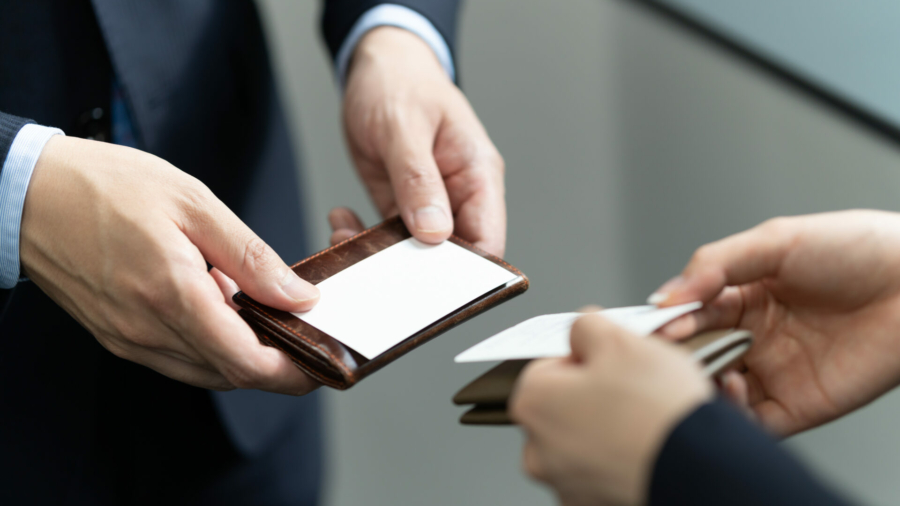Depending on the business you own, business cards can have a logo or not. They can be printed on both sides or one. They can contain your company’s information and logo, allowing you to create a professional impression. Many companies choose to print their business cards in both sides for maximum visibility and impact. If you decide to print your cards only on one side, remember to select a card stock that is durable and offers high quality printing.
Professionalism
Professionalism on business cards is a key ingredient to success. People like dealing with reputable businesses, and a well-designed card is a sign of this. Credibility is especially important when you deal with B2B clients and companies, as customers need to trust you before they make any investments. Fortunately, there are many ways to show your credibility. Listed below are some tips to make your card look more professional.
Make the design easy to read and remember. Don’t feel like you need to reinvent the wheel with a fancy font or unusual design. A simple, classic design with a few key design elements is all you need to convey professionalism. Founder of The Web Group, a full-service IT firm focusing on security and compliance, Tim Parker enjoys writing financial articles and blogging on business development. Once you have your business card design ready, you’ll be well on your way to achieving this goal.
Reliability
A well-designed business card can communicate a solid reputation and credibility, and this can be especially important if your company works in the service industry. While customer testimonials are helpful, they aren’t necessary to build trust. Instead, the design of your card and its use of key elements can convey your reliability. To accomplish this, here are a few design tips. Keep your card simple, but use key elements to communicate reliability.
Reliability of business cards: Business cards represent trustworthiness, honesty, and reliability. Without them, you risk losing credibility and reputation. Furthermore, business cards are easy to carry around – they can be easily handed out, tacked to bulletin boards, or displayed on a counter. That means that people can quickly and easily get hold of them, which is an added advantage in the competitive marketplace. And while you may not think that the benefits of business cards outweigh the drawbacks, the fact is that most people still prefer to use them.
Credibility
A well-designed business card can instantly boost your credibility. A properly-designed card signals professionalism and seriousness. People want to do business with people they can trust and business prospects want to see that you’re credible before investing in your company. Credibility is especially important in B2B interactions. The following are three ways to increase the credibility of your business cards. a. Always update your business card. It can be as simple as updating the design, but it should still convey your current credentials.
First, make sure your business card conveys the right message. When you give out your business card to a prospective client, you’ll create a positive impression for your business. It can show the company’s size and scope, and it can even evoke feelings of trust. A business card is a valuable marketing tool that will remain relevant in the digital age. Second, business cards give potential customers a sense of preparedness and organization. This helps to create positive impressions long after the card leaves your hands.
Brand recognition
A well-designed business card reinforces your brand’s identity while taking up very little space. A good logo becomes the business’s iconic symbol and inspires positive emotions in potential customers. When creating the layout of your business card, pay close attention to the typography. Fonts, colors, and design should reflect your brand identity and style. You can also include a tagline for extra information. The best way to create a successful business card is to use the same branding elements on all of your marketing materials.
The design of your business card should include your brand name and logo, and it should be consistent with your website. Choose a font that complements the colors in your brand identity. If you want your card to reflect your logo, you can use your brand’s color scheme, as long as it is consistent with the rest of your branding. You can even use a design tool to create a business card for free. Regardless of the design, branding is essential, so make sure it reflects your colors, fonts, and imagery. If you want to attract the recipient’s attention to an Instagram account, leave some white space, or draw their eye to an Instagram profile.
Price
Business cards come in a variety of price ranges, from a simple black-and-white layout to a highly detailed design. Some online printing services even offer a free batch of cards, but these are usually printed on cheap paper and feature the logo of the printing company across the back. Shipping charges are extra. VistaPrint, for example, offers a free 250-card package with a limited selection of layouts. It also costs an extra $2-$5 to remove the company’s logo.
If you’re on a tight budget, a cheaper option is to print your own business cards. Most printing services will match the price of their competitors, but some may offer different shapes, such as star-shaped cards and fruit-shaped ones. There are also different stock numbers, which increase the price. However, it’s worth considering the cost of shipping when considering a price for your business cards. Some printing services offer free shipping and two-day delivery, but you don’t necessarily need the latter.

